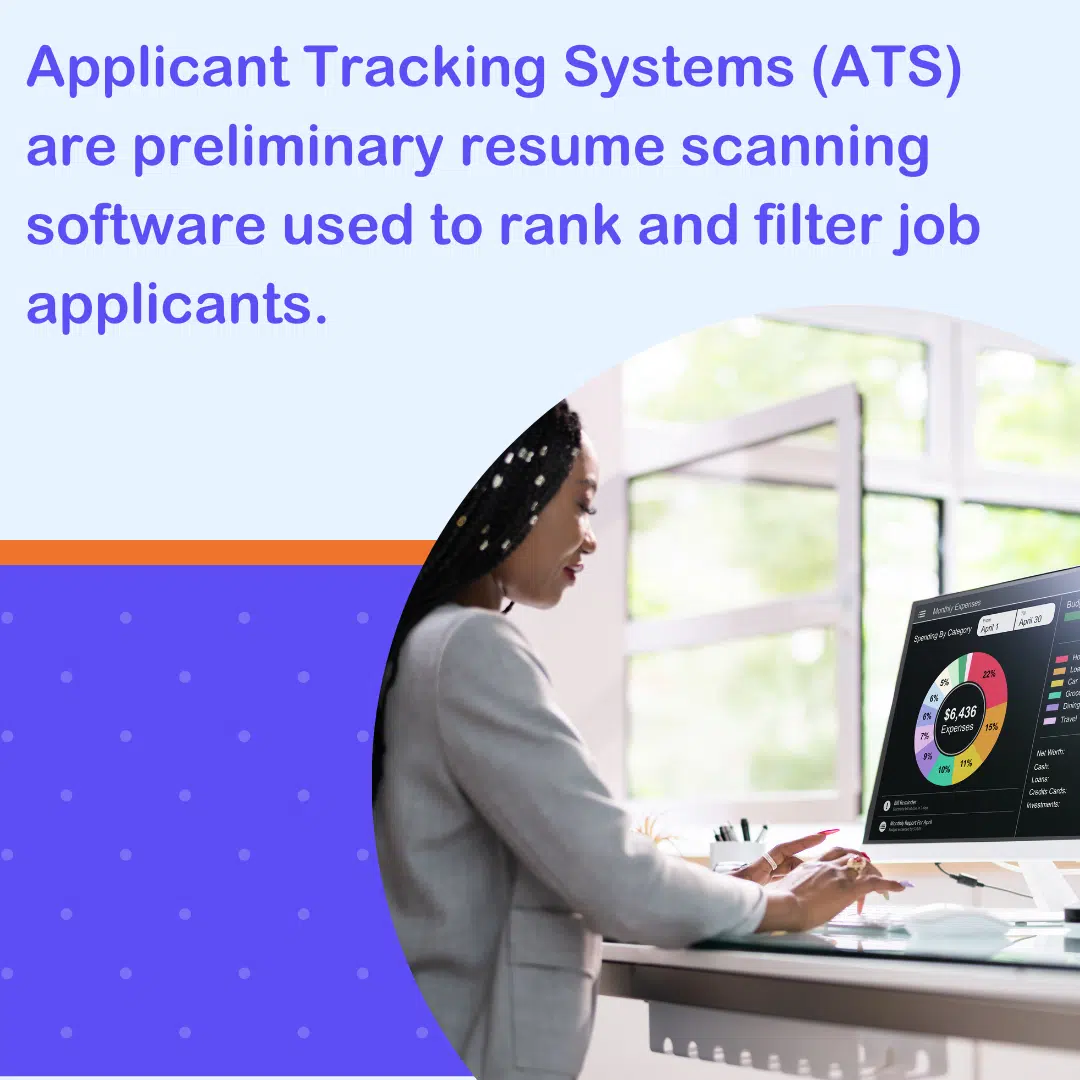This article will define Applicant Tracking Systems, provide ATS-friendly formatting tips for job search documents, and discuss the importance of incorporating keywords to strengthen an application.
Applicant Tracking Systems

Have you ever completed an online job application and wondered where it goes once you click submit? Chances are, that application is making its way through an organization’s Applicant Tracking System database.
An Applicant Tracking System (ATS) is a preliminary resume scanning software companies use to rank and filter candidates. Human resources departments utilize ATS to process the many applications they receive for their job openings. In 2023, 97% of Fortune 500 companies, 66% of large companies, and 35% of small companies were found to use an ATS.
Aside from scanning the resume, these widespread databases store applicants’ supplemental materials and information such as a cover letter, LinkedIn, references, and portfolios. When the information in a candidate’s application strongly matches the job description, the ATS will move them to the next stage, where HR reviews their materials and may request an interview.
ATS typically manages and sends automated rejections to candidates as well. If you recently submitted an application and received an automated rejection email within a few days to a week of submitting, an ATS is likely the reason.
You may have heard that optimizing your resume for ATS is essential. So, what does that mean? It means understanding what an ATS can read and what information it seeks within your resume. For job seekers applying to online job postings, it is essential that the resume is formatted correctly and tailored so that the correct keywords are included. These changes will increase your chances of making it through preliminary scanning software.
Formatting For Applicant Tracking Systems
Correct formatting is crucial in ensuring that an ATS can read your resume.
ATS-friendly resumes are minimalist and follow these formatting rules:
- Use clear, concise language and avoid jargon and slang.
- Label each section with clear headers such as “Summary,” “Experience,” “Skills,” and “Education.” ATS will look for these titles.
- Avoid using columns, graphs, photos, color blocks, headers, and footers. ATS cannot scan these blocks, meaning the information within them will be lost.
- Use an ATS-friendly font such as Calibri, Times New Roman, Cambria, Garamond, Georgia, Helvetica, or Arial.
- Have 1-inch margins on all sides of your document.
- Use acceptable date formatting: MM/YYYY or Month YYYY.
When including an acronym, include the long-form version as well (Ex. SEO, Search Engine Optimization)
When downloading and saving your resume, you must use an ATS-recommended format such as Microsoft Word, .doc, .docx, or a PDF. Before submitting your materials, check the application requirements closely to see if there is a specific upload method.
Job seekers, if you currently have a resume that falls outside these guidelines or is visually appealing with color blocks or graphics, that is okay. Although you will not want to use this resume for online applications, as long as your information is up to date, you can save this style of resume to use for in-person job fairs and interviews. In these cases, you know your resume will be reviewed directly by someone within the company, not an ATS. If an application asks you to send your resume via email only to a hiring manager, you may also decide to attach this styled resume.
Once the resume is formatted correctly, the next step in creating an ATS-friendly resume is to include keywords.
Keywords
Keywords are the words for which an ATS has been programmed to search resumes. These words come directly from the job description and are often related to the skills, experience, and other position requirements.
For example, say you are applying for a data entry role. In the job description, you might notice some of the following keywords: Microsoft Excel, data quality control, typing speed, database management, detail-oriented, communication, problem-solving, and time management. These descriptors are your keywords.

If the resume does not have the correct keywords, it will be scanned out. Unfortunately, even the most skilled and qualified candidates could be rejected if they do not have the right words on their resume.
That said, it is important to only incorporate keywords you are skilled in on your resume. These skills and attributes are the ones an interviewer is most likely to ask you to expand upon in an interview, so being honest and truthful in the resume is imperative. The purpose of tailoring the resume is to enhance it with key qualities that you possess, not to lie about your experiences or skills.
Jobscan
Jobscan is an online tool that can help you improve your resume, cover letter, and LinkedIn profile. It provides instant analysis of how well your resume is tailored for a particular job and creates a report with suggested formatting changes and keywords to be added to your resume to get it through a company’s Applicant Tracking Systems (ATS).
Is there a job you are interested in applying for, and would like to make sure your resume is tailored correctly? Hire Autism has a select number of premium Jobscan accounts available to job seekers at no cost. Contact Hire Autism at [email protected] to get your free account today!


